We’re in the midst of our Korean vacation, and I’d like to share a few pictures.
Our Talk at Reebok Crossfit Sentinel
Crossfit has come to Korea in an impressive way. Crossfit Sentinel has opened four gyms in the Seoul area and their facility in Seoul’s City Center, where we spoke, has a golf facility and a café that sells PHD-like food.
On Saturday I gave two talks, one on diet and one on lifestyle. Our photographer (Shou-Ching) neglected to take photos during the talks, but here we are afterward with the leaders of Crossfit Sentinel:
Tombs
Our first priority, once our talk was out of the way, was a trip to Shou-Ching’s hometown, Yeongwol, to pay respects to her father. In traditional Korean Buddhism, graves are marked by a mound of earth, and our first step was to weed the plants on and around the grave:
Buddhism assumes communication between our world and the spirit world, and descendants support their ancestors’ spirits with gift offerings, such as food. Here we paid our respects to Shou-Ching’s father with prayer and an offering of bananas, oranges, and chicken:
We also sprinkled a bottle of wine around the grave to provide him with something to drink, and made a gift of gold and silver, transmuted by fire from gold and silver paper:
Shou-Ching’s father was extremely sociable, the center of Yeongwol’s Chinese community, owner of Yeongwol’s most popular restaurant, the creator of the town’s Chinese school, and everyone’s first recourse in times of trouble. With food, wine, and money for gifts and gambling, he may be equally popular among the spirits.
Yeongwol would be a minor backwater in the Korean countryside were it not for a notorious event in Korean history. King Munjong of the Joseon dynasty died in 1452 when his son was 12 years old. The son, King Danjong, ascended to the throne, but regents ruled in his place. The regency was overthrown a year later in a coup led by Danjong’s uncle. After a counter-coup attempting to restore Danjong to the throne failed, he was exiled to Yeongwol. After a second failed restoration attempt when Danjong was 17, he was forced to commit suicide. Two hundred sixty-eight supporters of Danjong were executed. After the suicide, Danjong’s body was left to decay in the river, and a royal edict threatened anyone who rescued the body with three generations of persecution. However, a local man recovered the body and buried it in a secret grave, which was eventually found a few centuries later.
Over the course of subsequent centuries, Danjong and his followers were posthumously accorded greater and greater honors, in an attempt to appease their spirits; the man who recovered his body was given the status of a royal minister. Danjong began to be honored in art:
His grave was moved to a suitable site for a king, on a high ridge overlooking Yeongwol:
Today the tomb complex is a UNESCO world heritage site, you have to pay admission to visit, and the tomb is roped off. But in Shou-Ching’s youth, it was untended, and the village children would race up the hill to ride on the stone stallions, tigers, and sheep that surround the grave. If the sculptures look worn, it is not only because of the weather!
Temples
Buddhist temples are found in remote mountain sites throughout Korea. They are places of retreat and meditation; it was central to their purpose that they were not, in the days before roads and automobiles, easy to visit. City-dwellers would have to make an arduous journey to reach them, and might spend a week in prayer and meditation repenting misdeeds and repairing their spiritual affairs.
A common feature of temples is a source of spring or mountain water, channeled into a drinking fountain. At Geummongam in Yeongwol, my nieces and I had a contest to see who could stand the longest in a pool of cold spring water downstream from the fountain:
At Baekdamsa in Inje, here is a typical prayer room. Three Buddhas and a large number of figurine monks are mounted on the back wall.
Meditative prayer will typically be led by a monk who chants sutras and strikes a mok-tak to keep rhythm. In the temples we visited, a chanting monk would wear a microphone and loudspeakers around the temple would broadcast the rhythmic chanting.
Baekdamsa also had a wishing pond with water lilies. Tossing a coin into the central reservoir would grant a prayer:
Around the river that runs in front of the temple, visitors had built rock cairns:
Food
We had a delicious meal at a traditional Korean restaurant devoted to an uncommon “safe starch,” acorn starch. Acorn starch is usually served as a sort of jelly, called Dotorimuk, but it can also be used to make noodles or other foods.
At this meal, almost every food (apart from the cured duck – the reddish ham-like food on the left of the large plate – and the vegetables) used acorns:
On Sunday we went to a restaurant made popular by a TV special, which offered a wide range of vegetable dishes made with medicinal plants traditionally used in Chinese medicine, along with pork belly and rice:
Lynh wanted us to blog about eating live octopus, so we had to go to a sashimi restaurant. At Gisamun-ri south of Yangyang, we had this feast. First, the appetizers:
Here I’m eating a barnacle:
Then the sashimi. Puffer fish:
Two other varieties of fish:
Live squid, tunicate or sea squirt, abalone, and sea cucumber:
Sea urchins (which taste like a seafood pudding):
There is a risk to eating sashimi: many wild fish and shellfish carry parasites. This was brought home to us the next day. After our sashimi dinner, we stopped in Yangyang to buy some fresh seafood – scallops, clams, and octopus. The next day we extracted Anisakis worms from all three foods:
Other Sights
Nearly all free land in Korea that has not been built upon and is flat enough to support agriculture hosts cultivated crops. Here is a rice field in front of a restaurant:
Typically the farmers also operate restaurants or shops. This woman is a buckwheat farmer who operates a stall in the market at Yeongwol selling buckwheat, cabbage, and scallion pancakes:
Here I am with Shou-Ching’s mom at the beach in Yangyang, sporting a seaweed necktie:
Finally, some landscape photos. Korea is over 70% mountainous and resembles West Virginia or the White Mountains of New Hampshire, but the landscape is geologically younger and more rugged. Here are three photos from scenic Seoroksan National Park:
Conclusion
Koreans probably eat one of the globe’s most healthful diets. They eat a tremendous variety of vegetables – probably rivaling the hundreds of species eaten by Paleolithic hunter-gatherers. However, I noticed that Korean food has become appreciably sweeter and more processed since my last visit 11 years ago; the kimchi is now much less tasty than before, and inferior to our homemade kimchi; bread has made major inroads replacing rice and rice cakes; and the number of overweight Koreans has significantly increased.
Here is a slide from my Seoul talk, based on data from Gapminder. Korea and other east Asian countries have led the world in life expectancy:
If Koreans continue to shift their foods toward processed and sugary western foods, I doubt this superior longevity will continue. Korea, I believe, needs the Perfect Health Diet.







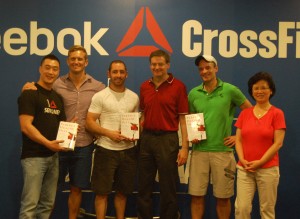
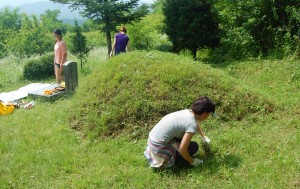
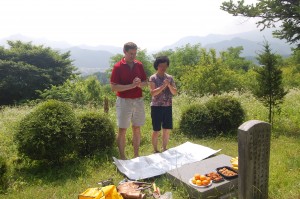

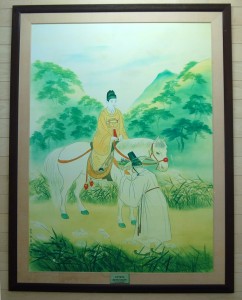
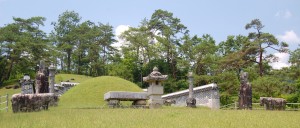
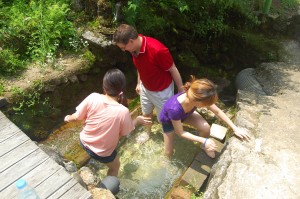
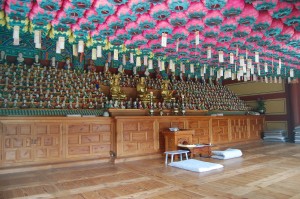
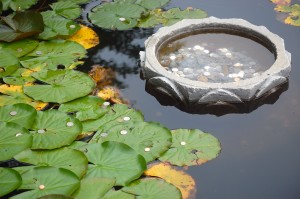
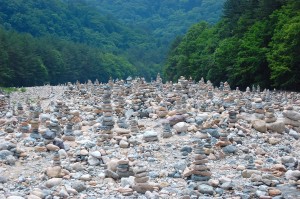

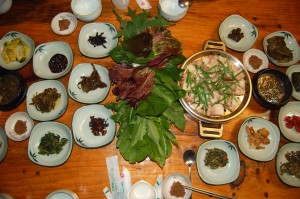


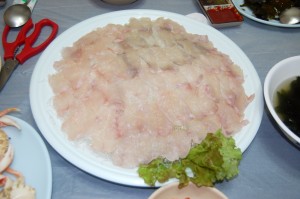
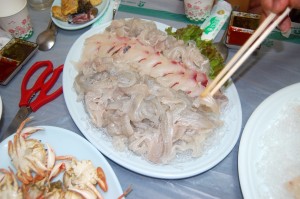

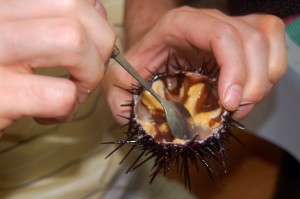
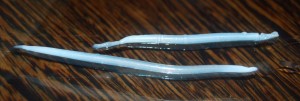
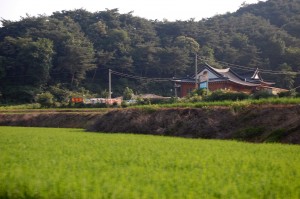
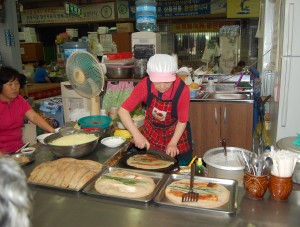
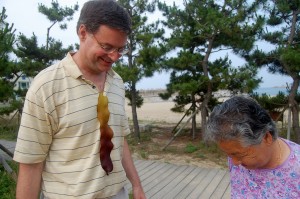

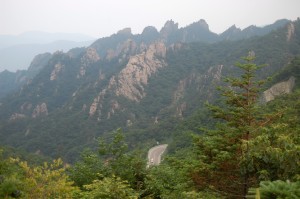
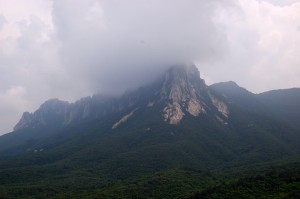
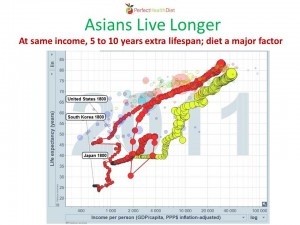




I am so glad that you wrote this article. I just finished tutoring English as a second language to a young woman from Korea. We spent a lot of time exchanging recipes and discussing food. I became tremendously impressed with her diet. As you mentioned, each meal had a great variety of vegetables. If all American’s would just start eating 2-3 servings of vegetables with each meal ( or lunch and dinner) we would all be so much healthier and thinner. I also really appreciated seeing the pictures you posted after being immersed in Korean culture for the last year. Thanks again for the last post!
Paul, You have scared hell out of me by showing picture of Anisakis worms…. I am so scared to eat any sea food now. Sooo big worms found in clams and scallops … I usually eat lot of clams, sea and bay scallops, mussells, oyesters, sardines, salmon and some tuna and shrimp. Please tell me how I can be safe eating my seafood. I am not going to touch it again till you provide me some assurance. I am just 22 and want to live a healthy life and produce babies!
Hi Eve,
Cooking kills the worms, so if you don’t eat seafood raw, you should be in good shape. Even if you do, Anisakis larvae don’t reproduce in humans, so they tend to produce a self-limiting infection.
I think it’s a good idea to eat cooked seafood. Sashimi should be frozen before eating at minimum.
I eat a great deal of sushi and I’ve never seen a worm or any other parasite, nor have I ever become ill. I believe deep freezing is standard practice in the U.S., and other places as well, and effective in addressing this concern.
Not saying sushi couldn’t cause problems, but I’ve never experienced it, nor can I recall hearing of any on any significant scale. I wonder if this is a theoretical problem but not in the main a practical one.
Thanks paul, I do eat raw oysters which I don’t think will be frozen previously .. Do they have potential risk? Also I eat salmon rare.
Great pictures Paul and Shou-Ching and niece. I love the pictures of the feast you put together for Shou-Ching’s dad and of course, everything you are eating there looks delicious. Thanks for indulging me and educating me at the same time! And sorry about the worms- yikes! we really are surrounded.
Are Korean acorns different from North American acorns? I’ve heard that acorns are toxic and the American Indians who ate (maybe, still eat) them had to do a lot of preparation to make them safe to eat.
Not exactly same, but similar. (There are a lot of varieties in Oak trees, and Korea and America have different varieties.)
I’m not sure about toxin, but the main reason the acorns need a lot of preparation is due to tannin.
Korean and native American do the same process to remove tannin as far as I know.
“However, I noticed that Korean food has become appreciably sweeter and more processed since my last visit 11 years ago; the kimchi is now much less tasty than before, and inferior to our homemade kimchi; bread has made major inroads replacing rice and rice cakes; and the number of overweight Koreans has significantly increased.”
You are 100% correct about this.
I think Korean food can be very healthful food with some minor changes and the perfect health diet can be the perfect guide for that.
Thank you Paul and Shou-Ching for sharing this. It’s just a wonderful photo-essay.
Lovely pictures. Thank you for sharing with us, your readers, a part of your personal life.
Amazing landscapes andthe food looks amazing. With so much variety that the English meat and two veg hide in shame.
Thank you Paul and Shou-Ching.
So glad you took the time to post those pictures. Brought back lots of memories. I was stationed at Camp Humphrey’s, the site of the real MASH 4077th, from 94-95. Ate a lot of food out of ‘off-limits’ Soju tents. I loved spending the day at the market in Pyongtaek train station trying all the strange foods–live and dead.
So… did you eat the live octopus? And was it indeed live or was it dead + muscle contractions?
Great pictures! Looks like a PHD paradise, I want to visit it now.
I ate live squid. Actually I’m not sure exactly when squid die. It was live until a few minutes before eating, when it was chopped into pieces. The legs can twitch after chopping.
Korea is much easier to visit when you have relatives living there. I don’t think I would enjoy it if I had to do it alone, without knowing the language.
Wow, Paul. There are a lot of items on the menu that look great in those pictures.
Razwell
lovely.
it was sweet that you visited the tomb.
the story of Danjong is very sad & brutal tho.
This is great site for all internet user.I have seen all content,realy its very helpful for us.I seem, we should read it again and again.If you want to learn more and more about this please see sell coins rancho cucamonga